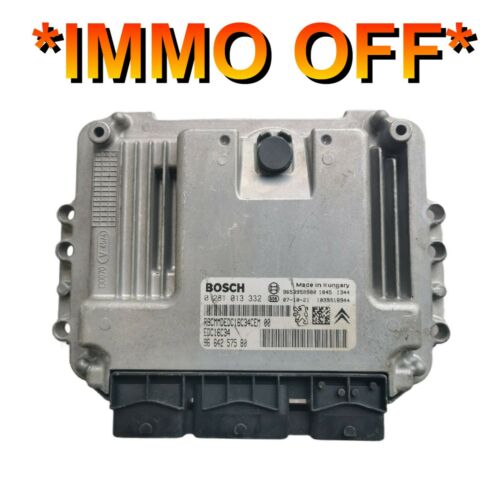Hi, I'm new to the forum and Peugeot ownership (well not quite, had a 205GTi and 405Mi16 back in the day), hoping somebody can help with this issue...
I just acquired the above car very cheap from a friend of a friend as a non-runner and I'm hoping to fix it so my son can use it as his first car. The vehicle is in great condition but has the fault that it will crank over fine but just won't fire.
Some back story to where we got the car...
The previous owner to the person I purchased from had it almost from new. Service history is good, timing belt done in past 2 years (10k miles ago) and well looked after. Seems he had a bad period with the car (not sure why) which resulted in the BSM being changed, new keys, and ECU (I believe this was all done by JC Cars in Norwich based on the sticker on the ECU).
The car was sold to the person we got it from 18 months ago. All was working fine for many months. Passed MOT in mid-June with no major issues (tyre & number plate bulb) and then a fault just appeared with the engine cranking not firing in early July. He never bothered to investigate as he was imminently moving to the US hence the super cheap price.
The current situation is as follows...
I've checked/done the following so far this morning:
Quite a busy morning but unfortunately not very successful. Would be great if somebody could shed some light on what my next steps should be?
Thanks in advance.
I just acquired the above car very cheap from a friend of a friend as a non-runner and I'm hoping to fix it so my son can use it as his first car. The vehicle is in great condition but has the fault that it will crank over fine but just won't fire.
Some back story to where we got the car...
The previous owner to the person I purchased from had it almost from new. Service history is good, timing belt done in past 2 years (10k miles ago) and well looked after. Seems he had a bad period with the car (not sure why) which resulted in the BSM being changed, new keys, and ECU (I believe this was all done by JC Cars in Norwich based on the sticker on the ECU).
The car was sold to the person we got it from 18 months ago. All was working fine for many months. Passed MOT in mid-June with no major issues (tyre & number plate bulb) and then a fault just appeared with the engine cranking not firing in early July. He never bothered to investigate as he was imminently moving to the US hence the super cheap price.
The current situation is as follows...
- The car won't fire as mentioned
- Windows, indicators & wipers don't work - checked all fuses but I recall reading somewhere these won't work if the Crank sensor has issues.
- Both keys do work - remote central locking does work - car beeps with the key in ignition and door open
- I plugged in my Autel MK808 reader and got the following codes:
- P0193 - Diesel pressure signal Circuit open or short to positive, or value too high
- P0122 - EGR throttle position repeat signal Short circuit to ground or value too low
- P0113 - Intake air temperature sensor signal (flowmeter) Circuit open or short to positive, or value too high
- P0473 - Exhaust differential pressure sensor signal Circuit open or short to positive, or value too high
I've checked/done the following so far this morning:
- BSI reset as I know the battery was in/out of the car, fully charged too
- Cam / Crank synch = No, even when cranking - belt does turn as do crank and cam pulleys, belt looks fine albeit to me seems a little loose
- Engine speed = 0 rpm, even when cranking
- Measured Fuel Pressure = 289
- I'm getting 7.5v on the Crankshaft Sensor signal wire with the ignition on - I thought this would be higher but can't find specs?
- The car will start if I spray Easy Start in the intake, sounds ropey which I think is to be expected.
- Checked all fuses and connections for continuity/corrosion and all look ok to me.
- I've replaced the Crankshaft sensor on the off chance but made no difference to above readings. The connector wiring appeared OK too.
Quite a busy morning but unfortunately not very successful. Would be great if somebody could shed some light on what my next steps should be?
Thanks in advance.







